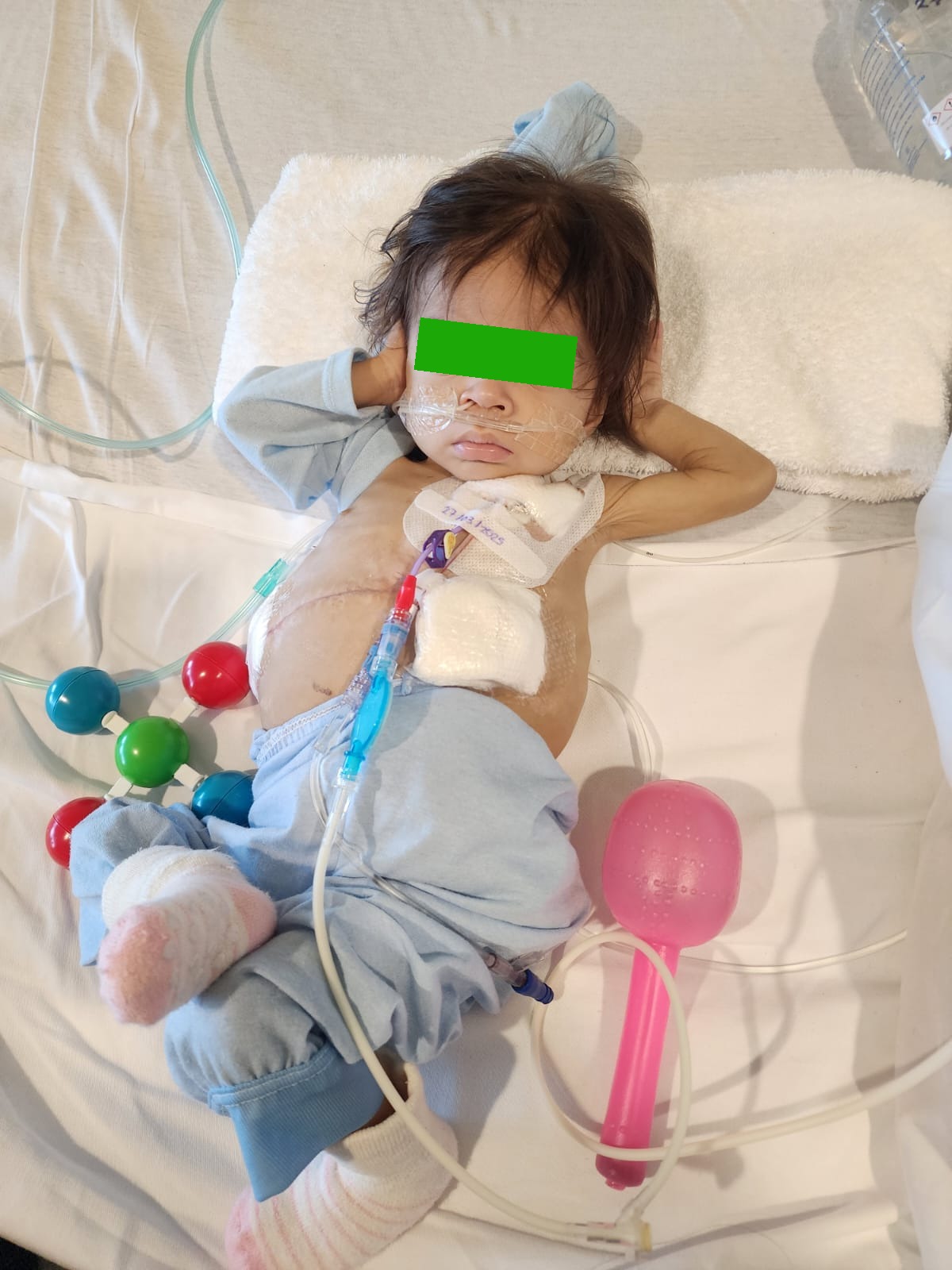Cardiac arrest during pediatric liver transplant with living donor. Difficult decisions
Ivone Malla1, Ariel González Campaña2, Erika Selzer1, Pablo Reyes3, Thomas Iolster3, Andrés Villa4, Martín Fauda2.
1Pediatric Hepatology and Pediatric Liver Transplant Section, Hospital Universitario Austral, Pilar, Argentina; 2Liver Transplant Surgery Unit, Hospital Universitario Austral, Pilar, Argentina; 3Pediatric Intensive Care Unit, Hospital Universitario Austral, Pilar, Argentina; 4Pediatric Inpatient Unit, Hospital Universitario Austral, Pilar, Argentina
Background: intraoperative cardiac arrest (ICA) is a severe complication, mostly reported in adult recipients of liver transplant (LT) and usually related to hyperkalemia after re-perfusion.
Aim: to report a case of ICA prior to reperfusion in a pediatric patient of our center.
Case report: a 1yr-old girl with biliary atresia (AB) without bile drainage after Kasai surgery at 45 days of life, was evaluated for LT with related living donor (LD). She had history of severe malnutrition, ascites, and infections probably originating from a biliary cyst. During hepatectomy she started with fever and before implantation of her mother’s left hepatic lobe, presented an ICA that lasted 4 and was reversed with maneuvers and vasoactive drugs. During the hepatic vein suture, she presented a second ICA that lasted 17 minutes, during which decision was made to proceed with LT, while one surgeon was performing reanimation maneuvers and vasoactive drugs were indicated. She had no hyperkalemia. Lactic acid levels were high and she had hypocalcemia that required corrections. After these episodes, we decided to continue with LT and re-perfusion was well tolerated. Cultures from the intraoperative period were negative. She received inotropic drugs 48 hours and mechanical ventilation 4 days. Due to ischemia, she had multiple episodes of intestinal perforations requiring many laparotomies and duodenal, jejunal and ileal ostomies. 
She received broad spectrum antibiotics due to multiple infectious episodes. Total parenteral nutrition was indicated, without enteral nutrition during a month. She continued with a combination of both, enteral and parenteral nutrition. Currently, 3mo after LT, the patient is in pediatric inpatient unit, receiving nutritional support.

Liver function tests are normal and she is under immunosuppression with Tacrolimus. Discussion: with a huge effort of interdisciplinary care, our patient survived and is recovering after 2 ICA episodes not related with re-perfusion syndrome. We believe that is important to report these challenging and complex cases in order to aid with difficult decision-making during pediatric LT.
[1] intraoperative cardiac arrest
[2] Pediatric liver transplantation
[3] Intestinal ischemia